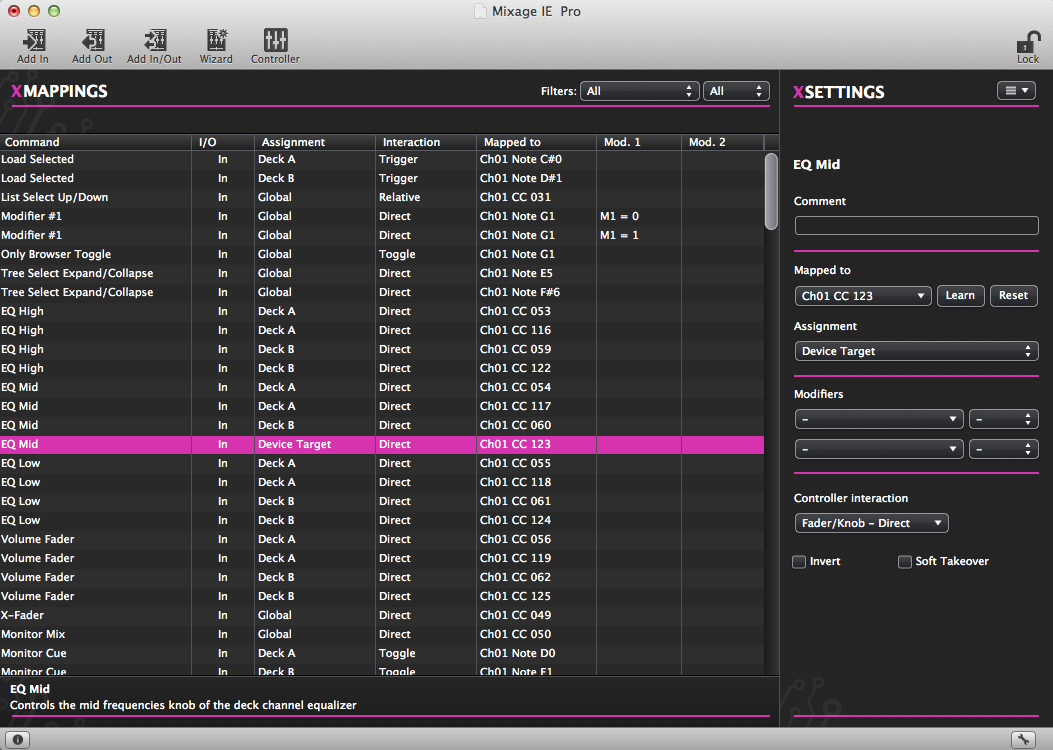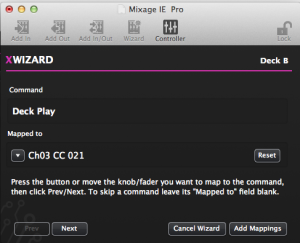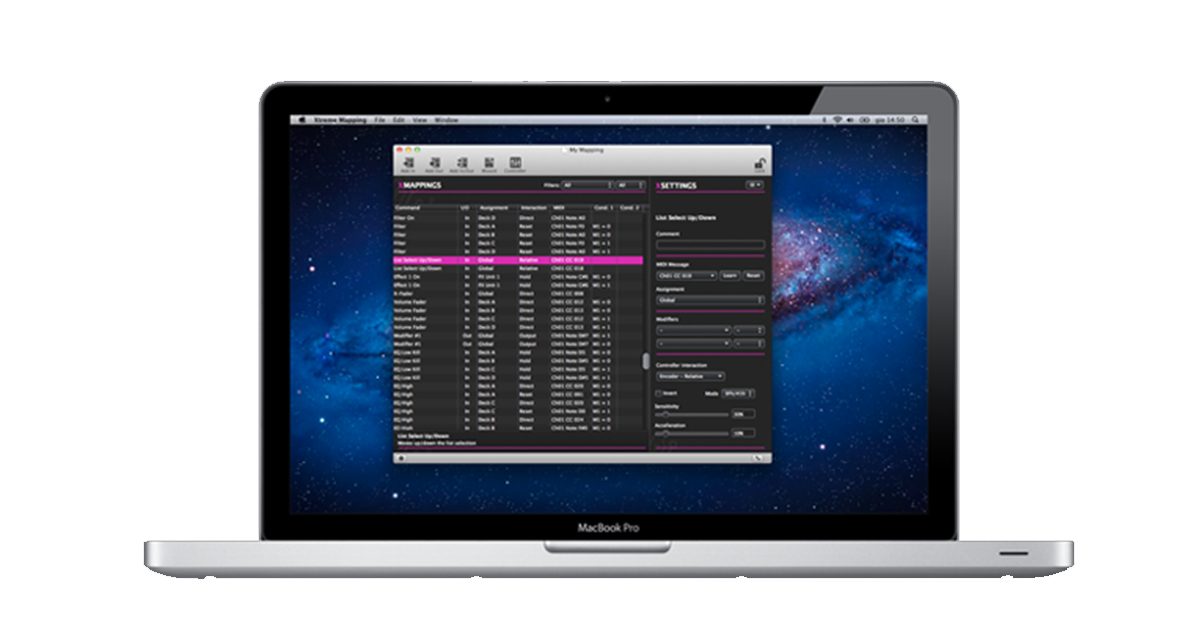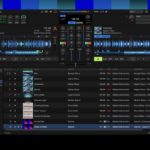Traktor is great software but is not known for its user-friendliness in certain areas, one being Midi mapping. Put simply, it is tedious to work with. Want to change the Midi channel of a bunch of commands? Get ready to do each individually (goodbye, evening). Want to expand the mapping window to full screen to see what you’re doing? Not so fast, buster. Scrolling? Cut and pasting? Sorry.
In lieu of a long-awaited overhaul of this area of the software, we have Xtreme Mapping, which has now hit v1.2.
First impressions/setting up
Midi mapping is a great thing – it’s the DJ software version of pimping your ride, and far from being just a geeky diversion for people who really should get a paying gig/girlfriend/ life (it often happens in that order, I have observed), it has really obvious practical applications for the serious digital DJ.
From getting a controller you love to work with software it wasn’t intended to, to making two controllers play nicely together, to making a redundant knob control something you’re always having to use the keyboard for, being able to map or remap your DJ hardware can improve your DJing experience and performance a lot. While I believe wholeheartedly in “set it and forget it”, there’s no harm at all in being able to set it exactly how you want first.
Which brings us nicely on to getting going with Xtreme Mapping 1.2. Firstly, you need to go and get a copy from the App Store (it’s an OSX app only at the moment, so PC users will have to read in envy I’m afraid).

What becomes clear right away is that this is a standalone app – it doesn’t integrate with Traktor at all, so you load a TSI file (TSI files are the name for Traktor’s mapping files), do your work, then save it for importing into Traktor. This is a disadvantage if you want to see the results of your changes, or at least test them, as you go along – if so (and it’s a reasonable assumption that you will), it makes the process more long-winded than if you could work on the “live Traktor file”.
However, look what the GUI offers: Cut and paste, ability to resize the screen; up/down arrow scrolling; ability sort your mapping’s elements by command; up/down arrow keyboard scroll; I/O, assignment etc – it’s immediately apparent that simply as a working environment, this is incomparable to the stunted Traktor mapping window.
It’s not rocket science, but oh how welcome these basics will be to anyone who’s struggled in Traktor’s mapping area. No wonder there are stories about how people making “official” Traktor mappings for various hardware have been using the app to do it or rescuing new gear set-ups at trade shows with quick backstage tweaks using this software to save the day.
In use
Midi mapping is not something anyone can just “do”. If you want to get serious about it, firstly I strongly recommend you buy Traktor 2 Bible, which will give you the grounding in the software that you’ll definitely need to be able to do any of this successfully. (I also recommend you try your hand with mappings in Virtual DJ or Algoriddim’s djay, because in both of these packages you can work out the basic concepts without tearing your hair out).
There are probably two types of Midi mappers, just like there are two types of computer programmers. There are the “dabblers”, who want to make small tweaks and changes to what already exists and have no wish to do it all from the ground up (yup, that’s me), and the hardcore who prefer to start with a blank slate and come up with weird and wonderful custom mappings to suit their own fiendish ends.
But with Xtreme mapping, it’s actually perfectly simple to make a mapping from scratch yourself (well, as simple as these things are by nature, anyway).
The mapping wizard
There’s a mapping wizard, you see, which moves you through the main areas you might like to map (such as a deck, some FX, or a mixer section), complete with Midi learn, where you just touch or move the control and the software picks it up.

Once you’ve mapped an element, it moves on to the next command (for instance, if you were mapping a deck, it would ask you for the cue button, the play button, etc.)
This way, you can build up a new mapping section-by-section, ready to save, import into Traktor, and test. As mentioned earlier, you’d likely be in and out of Traktor a few times to get such a mapping right, but nonetheless, it makes something possible for people who otherwise might not even attempt it.
Manually editing mappings
Otherwise, you’re able to edit the mapping manually, in much the same way as you do in Traktor, but with all the benefits already described, and more.
For instance, say you have two identical DJ controllers, and you want to map them both to Traktor. You can cut and paste a complete mapping for one, and by highlighting the new copy and altering in one got the Midi channel, suddenly they can both work concurrently – and it’s taken you about 10 seconds. Try doing that in Traktor’s default mapping window!
Exactly the same modifiers etc are all available to you as in the main Traktor software, and for complex mappings, there are filters so, for instance, you can set it to only show you the FX section of your mapping, clearing what you don’t need out of sight.
What’s new in v1.2
We didn’t review the first release of the software, but there are reviews over on the Traktor Bible website and on DJ Tech Tools if you want to read more about what I summarise below. Basically, the main issues most early reviewers had were conceptual (you can’t edit a mapping you’re using, as I pointed out at the start of the review), and niggly bugs, which have by and large been addressed in this release.
There is now support for Traktor 2.1.x, with a backward compatibility mode for older versions of Traktor. (This is really nice: Although I imagine anyone getting stuck into mapping will have the latest version of the software, it doesn’t mean the mappings you find or wish to modify will necessarily have been made for the latest version.)
Also, there is now HID support / NHL as Native Instruments’ take on a jogwheel mapping protocol is called. There is explicit support for the X1, S2 and S4. While there’s no Midi learn for Native’s controllers, due to their proprietary protocol, you can still remap your NI devices with considerably more ease than if you were using Traktor’s mapping window.
Conclusion
In an ideal world, there wouldn’t be a need for this stuff. In the meantime, Xtreme Mapping 1.2 will be warmly accepted by the modding community as a way of simply saving a lot of time, and making the whole process more enjoyable.

If Xtreme Mapping 1.2 could hijack Traktor, as Greasemonkey hijacks Firefox, so it existed within Traktor itself, it’d be even more convenient, of course – and this brings to the fore another weakness, in that Xtreme Mapping is only as good as how quickly the developer can catch up with changes to Traktor. For instance, with Traktor 2.5 around the corner, Xtreme Mapping will be out of date for at least as long as it takes for the next update.
At the end of the day though, this is a simple but at the same time powerful editor, that will allow anyone who wants to make changes, big or small, to their Traktor mappings – even to the mappings for the X1, S2 and S4 – to do so far more easily than attempting the task natively. At only US$5.99 on the Mac store, it’s a no-brainer, really.
Now, NI: Why not consider making the developer an offer he can’t refuse and incorporating the code into Traktor 3.0 natively?
• There’s a good set of videos explaining the features in more detail on the Xtreme Mapping website.
Have you struggled with mappings in Traktor? Have you tried this or the earlier version of Xtreme Mapping? Please share your thoughts and experiences in the comments.








